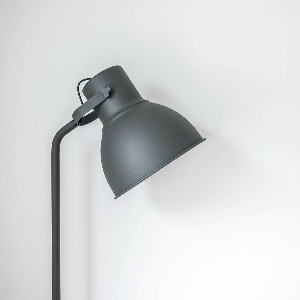
Compared to countries in the region and even developed cities globally, Singapore is typically seen as a rich and expensive country. In fact, many internationally-recognised reports frequently place Singapore among the most expensive cities in the world.
As a result, our GDP per capita – defined as the gross domestic output per person – tends to be high too. In 2024, the GDP per capita in Singapore was $121,161. Breaking this down simplistically, our GDP per capita translates into a monthly output of nearly $10,096.75 per month per person in Singapore. This includes even those not working (i.e. too old or young to work, unable to work or unemployed).
However, we don’t expect to earn this amount as individuals.
What Is The Average Monthly Household Income In Singapore?
In Singapore, the average monthly household income from work was $12,547 in 2024 – according to the Department of Statistics Singapore. However, if we compare among just resident employed households, i.e. households where there is at least one employed person, the average monthly household income rises to $14,542.
While this may seem like a high number, we should not get our hopes up or feel down if we aren’t achieving this figure yet. Besides, this figure is for household income, and not for an individual’s income.
By its definition, the average household income can be skewed by very high earners in Singapore. In fact, the median monthly household income from work, among employed resident households, was only $11,297 in 2024. Nevertheless, it’s a positive sign that the median income growth was higher than the average income growth.
| 2024 | 2023 | 2022 | |
| Average Household Income | $14,542 (+4.2%) |
$13,958 (+6.0%) |
$13,124 |
| Median Household Income | $11,297 (+3.9%) |
$10,869 (+7.6%) |
$10,099 |
As we can see in the table above, both household income have been growing over the past couple of years. However, In 2024, the average household income grew more than the median household income. This means the higher earning households outpaced the median households for income growth.
We can also look at this difference more closely in the average monthly household income between families who live in HDB flats and those who live in private properties.
| Monthly Household Income by Type of Dwelling ($) | |||
| 2024 | 2023 | Change | |
| Average | $14,542 | $13,958 | 4.2% |
| 1- & 2-Room HDB Flat | $4,018 | $3,897 | 3.1% |
| 3-Room HDB Flat | $8,080 | $7,750 | 4.3% |
| 4-Room HDB Flat | $11,650 | $11,319 | 2.9% |
| 5-Room & Executive HDB Flat | $15,141 | $14,665 | 3.2% |
| Condominiums and Other Apartments | $23,333 | $22,560 | 3.4% |
| Landed Properties | $30,021 | $28,169 | 6.6% |
Source: Department of Statistics Singapore
Naturally, those who live in bigger HDB flats or private properties also tend to earn a larger household income. However, those living in landed properties saw the biggest increase in household income this year. So much so that even those living in Condominiums and Other Apartments saw their household income rising slower than the average rate.
When looking at these statistics, we should know that average household income also corresponds to the number of persons living in our home. The more working household members, the greater our household income. If we have five household members (for example, father, mother, and three adult children) in a landed property, all working and earning $6,000 each, we would have a household income of over $30,000. However, this doesn’t automatically mean they are individually richer or better off than a single person who bought their own 4-room resale flat and earns $12,000 a month.
What Is The Average Household Income Per Household Member In Singapore?
We may want to pay closer attention to the average monthly household income per household member. This number was $4,898 in 2024 (for resident employed households in Singapore), an increase of about 4.2% from 2023. The median monthly household income per household member, though, was $3,615 in 2024, compared to $3,500 in 2023.
| 2024 | 2023 | 2022 | |
| Average Household Income per household member | $4,898 (+ 4.2%) |
$4,699 (+ 4.9%) |
$4,478 |
| Median Household Income per household member | $3,615 (+ 3.3%) |
$3,500 (+ 6.5%) |
$3,287 |
Read Also: CPF LIFE VS Retirement Sum Scheme: What’s The Difference?
Average Household Income Per Household Member According To Deciles In Singapore
To understand where we may stand, it may also be worthwhile tolook at which decile we fall into.
| Average Monthly Household Income per Household Member | |||
| 2023 | 2023 | Change | |
| Average | $4,898 | $4,699 | 4.2% |
| Deciles | Average Monthly Household Income per Household Member | ||
| 1st – 10th | $748 | $706 | 5.9% |
| 11th – 20th | $1,478 | $1,421 | 4.0% |
| 21st – 30th | $2,052 | $1,987 | 3.2% |
| 31st – 40th | $2,641 | $2,563 | 3.0% |
| 41st – 50th | $3,280 | $3,169 | 3.5% |
| 51st – 60th | $3,995 | $3,857 | 3.6% |
| 61st – 70th | $4,901 | $4,729 | 3.6% |
| 71st – 80th | $6,095 | $5,892 | 3.4% |
| 81st – 90th | $8,182 | $7,862 | 4.1% |
| 91st – 100th | $15,605 | $14,803 | 5.4% |
The lowest 10% of households saw household members earning just $748 per month. As we pointed out earlier, the highest earners also skew the statistics, as the top 10% of income earners have pay packets worth nearly double the next highest decile of income earners from the 81st to 90th percentile ($15,603 v $8,182).
From the numbers this year, we can also see that most household members in the top and bottom deciles were the only ones who had wage increases that were higher than the average change. At bottom end, this is good news, as the lowest income earners were earning more than other groups. However, the highest income earners also saw the biggest growth in their incomes in 2024.
How Much Did Our Average Monthly Household Income Grow?
It’s also good to see if there has been positive wage growth in longer time frames to determine if we are headed in the right direction.
| Average Monthly Household Income From Work by Type of Dwelling ($) | ||||
| 2004 | 2014 | 2024 | CAGR | |
| Average | $6,285 | $11,143 | $14,542 | 4.3% |
| 1- & 2-Room HDB Flat | $1,649 | $2,313 | $4,081 | 4.6% |
| 3-Room HDB Flat | $3,479 | $5,805 | $8,080 | 4.3% |
| 4-Room HDB Flat | $4,592 | $8,293 | $11,650 | 4.8% |
| 5-Room & Executive HDB Flat | $6,767 | $11,606 | $15,141 | 4.1% |
| Condominiums and Other Apartments | $12,149 | $19,843 | $23,333 | 3.3% |
| Landed Properties | $15,791 | $27,363 | $30,021 | 3.3% |
As expected, all households have benefited from decent income growth in the past 10- and 20-year periods. Quite hearteningly, those living in 1- & 2-Room HDB Flats have seen the second highest annual household income growth in the past 10 years – amounting to 4.6% per year. In contrast, those living in landed properties and Condominiums and Other Apartments have seen the slowest average household income growth in the past 20 years, rising only 3.3% per year.
Of course, the highest income earners are already starting from a much higher base, and their nominal income growth far outpaces others in actual dollar terms. Another explanation could be that the Government has been focusing support measures on lower-income households and lower-skilled workers, who may likely live in the smallest homes in Singapore.
Nevertheless, those living in HDB flats have generally outpaced those living in private properties in terms of average income growth over the past 20 years. This is a positive outcome to low-income and middle-income households.
Read Also: $711 To $2,772 A Month: Here’s How Much You Need To Spend During Retirement In Singapore Today
Why Our Salaries From Work May Not Match Up To These Figures?
If we simply look at the headline $14,542 income that the average household in Singapore earns, we may have an unrealistic point of view. For starters, we may be neglecting income that may be earned from owning a business or from investments. Those living in larger homes or earning more may be more financially literate to invest or may be able to tap on business opportunities more readily.
As mentioned, we must also be mindful of the number of working persons in our households. A bigger house can accommodate more people. Thus, those living in larger homes may look like they’re better off than the average even when it may not be the case at an individual level. Similarly, a single income earner in a smaller household may actually be better off than the average.
Our personal circumstances are also a function of our choices (whether one spouse wants to be a stay-home parent) as well as circumstance.
Another measure that we can compare ourselves to is the median income reported by the Ministry of Manpower (MOM). Singapore’s median income in 2024 was $5,500, a 5.8% increase from 2023.
For many of us, there will typically be two working adults (ourselves and our spouse) in our households. In fact, the average number of working household members in resident employed households in 2020 was 1.93 – which points to a married couple. The average household size among resident employed households in 2020 was 3.32 – which can also be read as having about 1 to 2 dependants (either children or elderly parents).
Read Also: Complete Guide To Employer CPF Contributions In Singapore
The post What is Singapore’s Average Household Income And Why It Is Different From The Salaries We Earn? appeared first on DollarsAndSense.sg.











